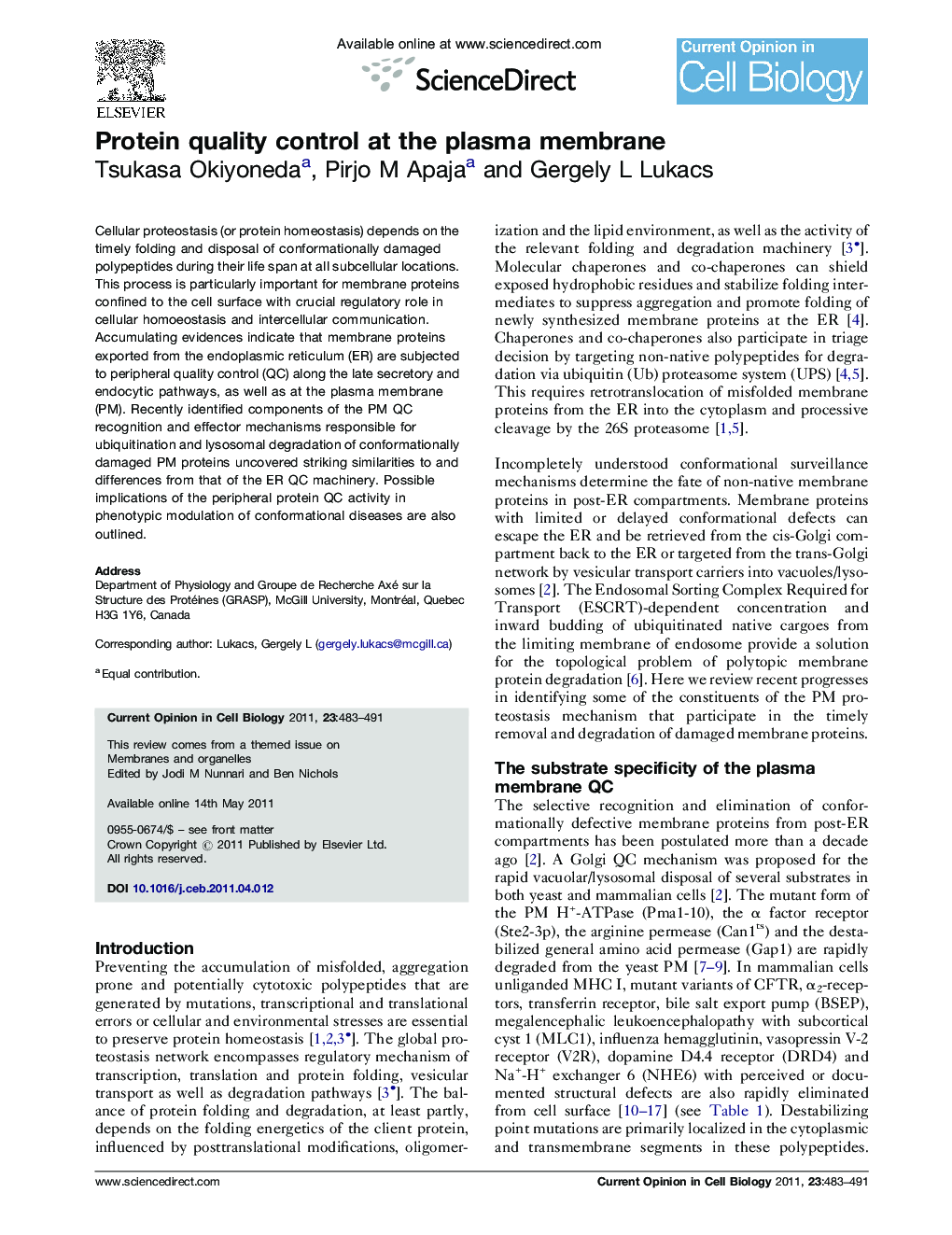| Article ID | Journal | Published Year | Pages | File Type |
|---|---|---|---|---|
| 2169894 | Current Opinion in Cell Biology | 2011 | 9 Pages |
Cellular proteostasis (or protein homeostasis) depends on the timely folding and disposal of conformationally damaged polypeptides during their life span at all subcellular locations. This process is particularly important for membrane proteins confined to the cell surface with crucial regulatory role in cellular homoeostasis and intercellular communication. Accumulating evidences indicate that membrane proteins exported from the endoplasmic reticulum (ER) are subjected to peripheral quality control (QC) along the late secretory and endocytic pathways, as well as at the plasma membrane (PM). Recently identified components of the PM QC recognition and effector mechanisms responsible for ubiquitination and lysosomal degradation of conformationally damaged PM proteins uncovered striking similarities to and differences from that of the ER QC machinery. Possible implications of the peripheral protein QC activity in phenotypic modulation of conformational diseases are also outlined.
► Disposal of non-native plasma membrane protein is integral to cellular proteostasis. ► Peripheral quality control mechanism eliminates non-native cell surface proteins. ► Polyubiquitination machinery for peripheral quality control is discovered. ► Ubiquitin-binding endosomal adaptors sort non-native membrane protein to lysosome. ► Peripheral protein quality contributes to pathogenesis of conformational diseases.
